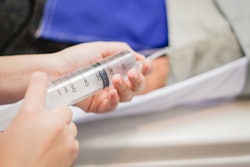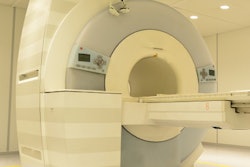
Can MR angiography (MRA) be effective in screening for brain aneurysms among patients with autosomal dominant polycystic kidney disease (ADPKD)? A new study published online July 30 in the Clinical Journal of the American Society of Nephrology backs the modality, even when no symptoms are present.
Researchers from the Mayo Clinic in Rochester, MN, found brain aneurysms in almost 10% of presymptomatic ADPKD patients who underwent MRA screening, which is equal to four times the detection rate among the general population.
"Our approach has been to recommend screening for patients with ADPKD who have a family history of aneurysm," said study co-author Dr. Vicente Torres, PhD, from the Mayo Clinic's division of nephrology and hypertension, in a statement. "We also recommend screening to patients with ADPKD before major elective surgeries (including transplantation), those with high-risk occupations, and those who after being properly informed on the available data wish to be screened for reassurance."
Patients with autosomal dominant polycystic kidney disease not only deal with bilateral kidney cysts but also can develop abnormalities outside of their renal system, most often as intracranial aneurysms. A ruptured aneurysm means a high chance of mortality, which should make screening all the more important.
While the need for screening in this patient population remains debatable, a February 2019 study from Malhotra et al supported MRA to screen and follow up patients with ADPKD-related intracranial aneurysms. It made sense for both cost-effectiveness and clinical outcomes.
To delve more definitively into the issue of using MRA to screen patients for aneurysms, Torres and colleagues reviewed 812 patients with ADPKD who were evaluated between 1989 and 2017. Patients underwent brain MRA scans even though they had no neurological symptoms.
The current study included newly diagnosed cases between 2009 and 2017, extended the follow-up time, and recorded the rate of intracranial aneurysm rupture in recent longitudinal studies and clinical trials of ADPKD. Only abnormalities of 2 mm or larger were deemed aneurysms.
The Mayo Clinic researchers discovered 94 intracranial aneurysms among the 75 patients (9%) who underwent MRA screening, with 12 (16%) of those subjects having two aneurysms and one patient (1.3%) having six aneurysms. The median diameter was 4 mm (range, 2-12 mm).
Based on previous research, the prevalence of intracranial aneurysms with MRA screening was four times higher in patients with ADPKD (8% to 12%), compared with the general population (2% to 3%). The good news is that none of the 94 intracranial aneurysms in the current study ruptured over an average follow-up time of nine years.
Torres and colleagues also concluded the following:
- 29% of patients with aneurysms had a family history of subarachnoid hemorrhage, compared with 11% of subjects with no family history of aneurysms.
- Among patients with evidence of aneurysms at initial MRA screening, new brain aneurysms were detected in five patients during an average follow-up of eight years, none of which ruptured.
- Of 135 patients (18%) with no brain aneurysms at the first screening, three patients developed aneurysms over an average follow-up of seven years, with two patients experiencing a brain aneurysm rupture.
"Our results and the review of the literature do not allow a firm conclusion on whether widespread or targeted screening for intracranial aneurysms is beneficial in ADPKD," the authors concluded. "A large prospective study would be necessary to determine the clinical utility and cost-effectiveness of these strategies. At present, our preference continues to be targeted presymptomatic MRA (or CT angiography) screening of patients with a familial history of documented aneurysmal rupture or unruptured intracranial aneurysm."


.fFmgij6Hin.png?auto=compress%2Cformat&fit=crop&h=100&q=70&w=100)





.fFmgij6Hin.png?auto=compress%2Cformat&fit=crop&h=167&q=70&w=250)











